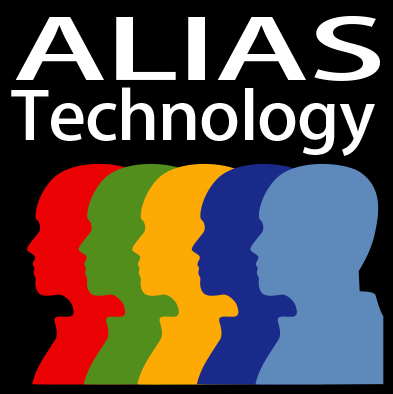Taking apart the name ALIAS is a good way to see the total picture of what the ALIAS software for forensic linguistic evidence is.
ALIAS is Automated: We automate our methods through computer programs so that our methods
- are objective,
- are not undermined by human fatigue, and
- process as fast as we can possibly make them.
Our computer programs analyze each case document in the same way, whether the document is being questioned or used as a comparison document. Thus, there is no subjectivity in analysis; subjectivity in analysis is a major cause of confirmation bias, and wrong results in forensic science. Automating analysis through computer programs guards against confirmation bias and produces objective and replicable results.
ALIAS is Linguistic: The adjective “linguistic” can refer to
- “anything having to do with language”
or it can refer to - “an example of analysis from the science of linguistics.”
The first definition covers all kinds of techniques that serve non-forensic purposes because they are not grounded in science:
- literary criticism (“the poem means…. because I say it means that!”),
- school grammatical rules (“thou shalt never end a sentence with a preposition,” etc),
- or just plain gut-feeling pronouncements (“I don’t like that wording”; “I’ve never seen that word misspelled like that”).
The second definition requires expertise in linguistics, i.e. an education in linguistic theory and analytical tools that every well-trained linguist knows how to use. Techniques from the second definition –real linguistics– can serve forensic purposes because they are grounded in science, can be repeated by other linguists, and will provide the same results from using the same analytical technique.
Our methods are built on fundamental principles of modern linguistic theory. We are trained as linguists and rely on standard linguistic methods. We apply current knowledge from linguistics to solve forensic problems. We use computational linguistics to implement the application of linguistic theory and methods to forensic problems. By using computational linguistics, we can automate some linguistic techniques completely, we can automate some linguistic techniques partially, and some linguistic techniques we are not able to automate at this time.
ALIAS provides Identification: One of the central issues in criminal/civil investigations, and thus forensic linguistics, is identification:
- who wrote it?
- who said it?
- what language is it?
Currently, our classification methods focus on identifying authorship through comparing known documents to any questioned document(s). We are researching classification methods for identifying voice. Our staff linguists provide language identification using standard linguistic techniques, but we are considering adding a module specifically for language identification, since writing systems cover many different languages.
ALIAS provides Assessment: Other important problems for language as evidence involve assessing language in various ways that have investigative value. Currently, our assessment methods focus on determining
- the authenticity of threats and suicide notes,
- veracity,
- the relationship between documents such as witness statements,
- the similarity of trademarks and service marks,
- linguistic profiling for gender, age, educational level, and non-native English.
ALIAS Is a Total System Forensic Text Analysis: ALIAS is a system which includes
- a central database of documents,
- analytical components which find and quantify relevant linguistic patterns,
- statistical components which analyze the quantification output, and
- reporting components which present the results.
When a document is analyzed through ALIAS, the user starts the case by selecting a type of analysis or module. Each ALIAS module accesses the document database, analyzes the document by extracting and counting specific linguistic patterns, implements a statistical analysis of the pattern counts, and reports an answer.
ALIAS contains three kinds of modules, depending on its level of automation and the user’s required expertise in linguistics or statistics.
- Automatic modules are fully automatic; both linguistic and statistical analyses are built-in.
- Interactive-Examiner modules require an examiner to interact with the software; this interaction involves linguistic or statistical analysis, depending on the forensic task. The Examiner does not need to be a degreed linguist, as the linguistic analytical techniques can be learned in training.
- Interactive-Linguist modules require a linguist to interact with the software; this interaction involves linguistic or statistical analysis, depending on the forensic task. The Linguist must be degreed and have expertise that is relevant to the forensic task. ALIAS Technology linguists are all degreed linguists with specialties in main subfields of linguistics.
ALIAS is multi-lingual. ALIAS can process English, Spanish, Italian, Dutch, German, Russian, Arabic, Hebrew, Farsi, Korean, and Chinese. All analysis techniques are available in English; some analysis techniques are available in all the other languages. Currently, we are working to bring all ALIAS analysis techniques to all the languages listed above.
